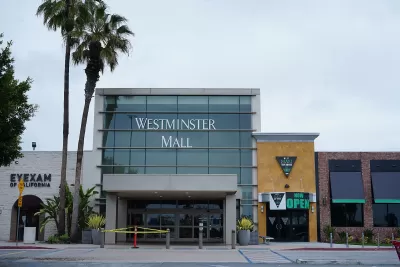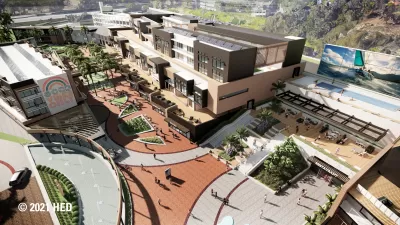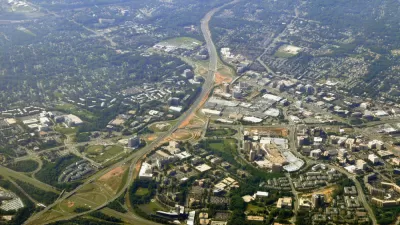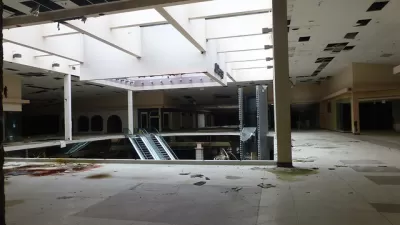As indoor malls lose their luster, their properties offer convenient amenities and infrastructure perfectly suited for redevelopment into housing, parks, and retail.

Despite their prominent roles in recent sci-fi thriller series, indoor malls around the country are hemorrhaging customers and tenants, with many becoming vacant husks surrounded by vast seas of parking.
According to a Los Angeles Times story by Hannah Fry, some of Orange County’s now-unoccupied classic malls may soon be revived as housing. “In a region where there is little undeveloped land and neighbors are likely to push back at new housing, some see declining malls as ideal places to build.”
Fry gives a brief overview of the mall’s role as an American cultural institution in the second half of the twentieth century (for more on that, read Alexandra Lange’s Meet Me by the Fountain: An Inside History of the Mall, one of Planetizen’s Top Urban Planning Books of 2022). But now, malls offer some of the best options for developable land in dense cities facing a housing shortage. The Orange County city of Westminster approved a plan to redevelop the Westminster Mall into a mixed-use property with as many as 3,000 residential units, hundreds of hotel rooms, 600,000 square feet of retail, and 17 acres of green space.
“Experts say that new laws, along with increased pressure from the state to build more homes, have convinced some local officials who might have been resistant to rezoning commercial properties in the past,” Fry explains. L.A.-area developers are counting on “a modern type of suburban dweller — one who would rather walk to restaurants and other amenities than live in a single-family home with a yard.”
FULL STORY: O.C. malls, fading from their hip glory days, may get new lives as apartments

Planetizen Federal Action Tracker
A weekly monitor of how Trump’s orders and actions are impacting planners and planning in America.

Chicago’s Ghost Rails
Just beneath the surface of the modern city lie the remnants of its expansive early 20th-century streetcar system.

San Antonio and Austin are Fusing Into one Massive Megaregion
The region spanning the two central Texas cities is growing fast, posing challenges for local infrastructure and water supplies.

Since Zion's Shuttles Went Electric “The Smog is Gone”
Visitors to Zion National Park can enjoy the canyon via the nation’s first fully electric park shuttle system.

Trump Distributing DOT Safety Funds at 1/10 Rate of Biden
Funds for Safe Streets and other transportation safety and equity programs are being held up by administrative reviews and conflicts with the Trump administration’s priorities.

German Cities Subsidize Taxis for Women Amid Wave of Violence
Free or low-cost taxi rides can help women navigate cities more safely, but critics say the programs don't address the root causes of violence against women.
Urban Design for Planners 1: Software Tools
This six-course series explores essential urban design concepts using open source software and equips planners with the tools they need to participate fully in the urban design process.
Planning for Universal Design
Learn the tools for implementing Universal Design in planning regulations.
planning NEXT
Appalachian Highlands Housing Partners
Mpact (founded as Rail~Volution)
City of Camden Redevelopment Agency
City of Astoria
City of Portland
City of Laramie





























